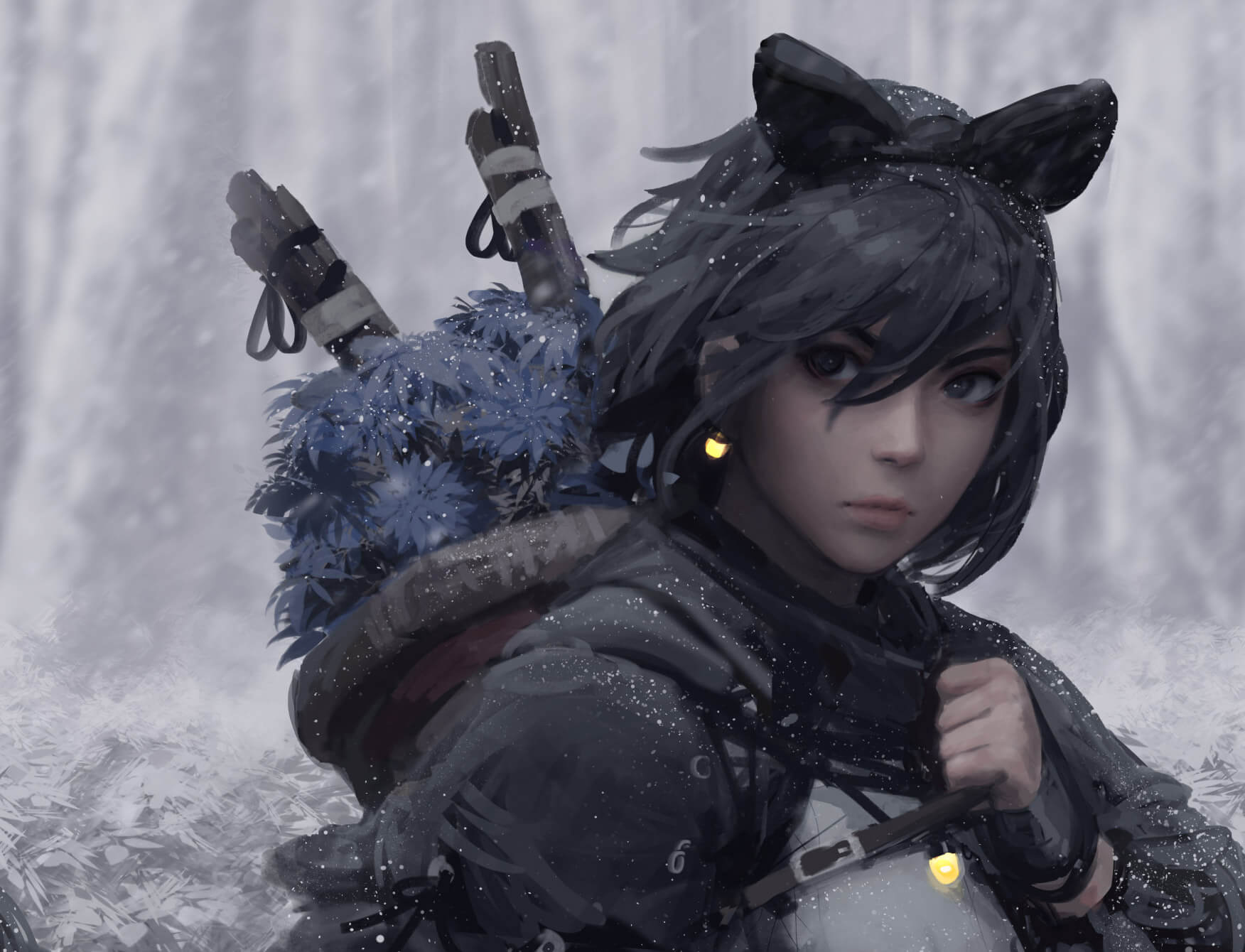What is a character design style?
In this article, you’ll learn common categories of character illustration styles as well as tips for building a consistent character style. Having a clear style is especially important when you have multiple characters in a shared setting such as an animation or comic, as your lead characters and supporting cast should feel like they belong in the same world.
Even if you're drawing stand-alone characters that don't interact with others in a story, having a solid character style will strengthen your artistic identity across your portfolio. If you’re drawing digitally, a tool with character design features like Clip Studio Paint can help you create more smoothly.
Popular styles of character art
Here are some broad categories for styles of character art, from cartoonish to realistic.
Cartoon style
Cartoon designs are expressive and unrestrained by the bounds of realism. More than simply exaggerated features, cartoon style can make an inanimate object into a relatable character, or push proportions beyond the realms of possibility. Cartoon style is very suitable for animation, comedic stories, and children’s illustration.
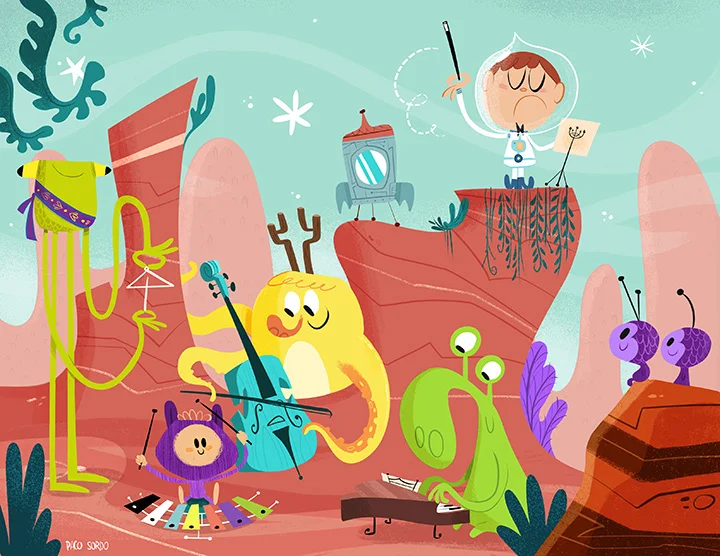
Realistic style
Realistic designs follow typical proportions of real people, with expressions and poses

generally limited by what is possible in real life. However, aspects of the face and body can be slightly simplified or exaggerated while keeping an overall realistic look, for example in superhero comics. This style is suitable for characters in a grounded or historical setting, or for character illustrations in non-fiction books.
Exaggerated style
Similar to realistic style, exaggerated character designs are largely based on real human proportions and features, but noticeably stylized. For example, the eyes may be bigger than is natural, or the character’s proportions may be adjusted for emphasis. Stylizing characters while maintaining a certain level of realism can make your characters look more appealing, and is suitable for all kinds of genres. Stylizing and simplifying character designs can also make them easier to draw repeatedly for projects like animation and comics.

Flat style
Flat illustration is characterized by simple, geometric shapes and block shading. Flat designs typically have distinctive silhouettes and bold colors. Flat character designs are often used in children’s illustration and editorial illustration for their approachable look.
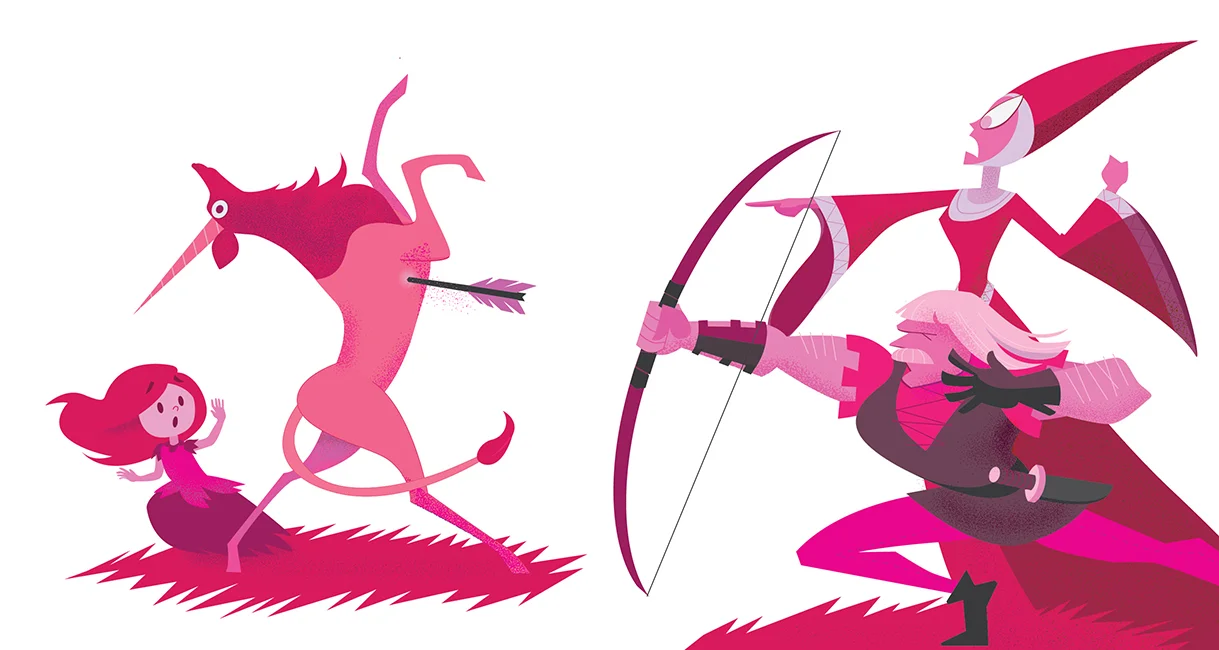
Anime style
This style is based on Japanese animation and manga, characterized by exaggerated features such as large eyes and a relatively small nose and mouth. The head to body ratio is also typically around 5 or 6 heads tall, compared to 7 to 8 heads tall in realistic proportions. While anime designs are greatly influenced by reality, they can have fantasy elements such as unnatural colored hair and eyes or unusual fashion.
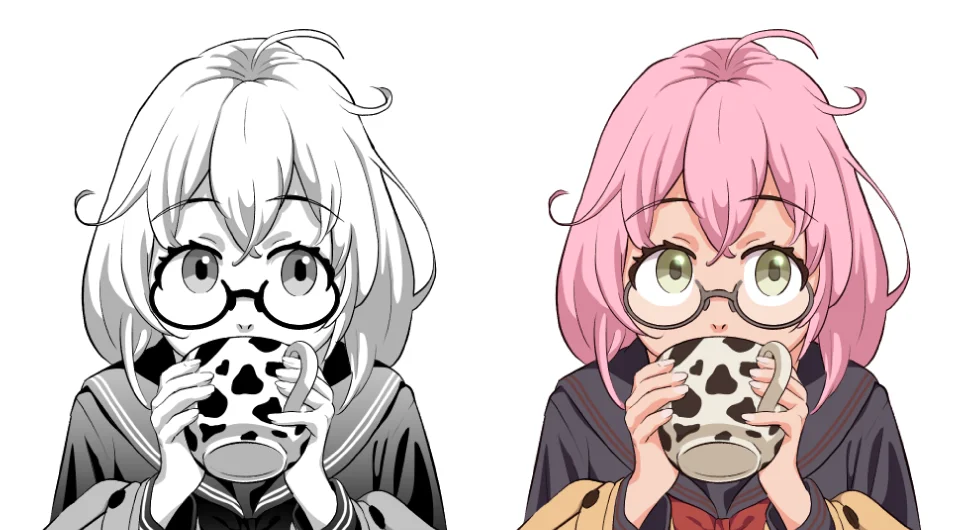
Chibi style
Chibi style is derived from anime style drawing, but with extremely deformed proportions for a cute appearance. Chibi characters are two- to four-heads tall, with eyes taking up a majority of the face. This style is marked by extreme facial expressions similar to emoticons and is suitable for cute or humorous illustrations and comics. See here for how to draw Chibi characters.
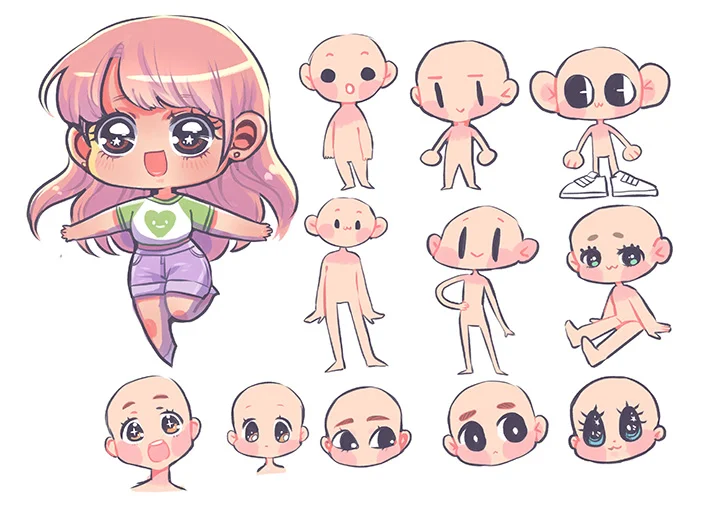
Pixel style
Pixel style is created at the pixel level using a grid or squares to place each color. Originating from the start of digital art in the 1970s, the technique was created to meet the technical limitations of games in the past. Today, pixel styles evoke a retro feel. You can use a grid tool or a single-pixel brush to draw pixel art.
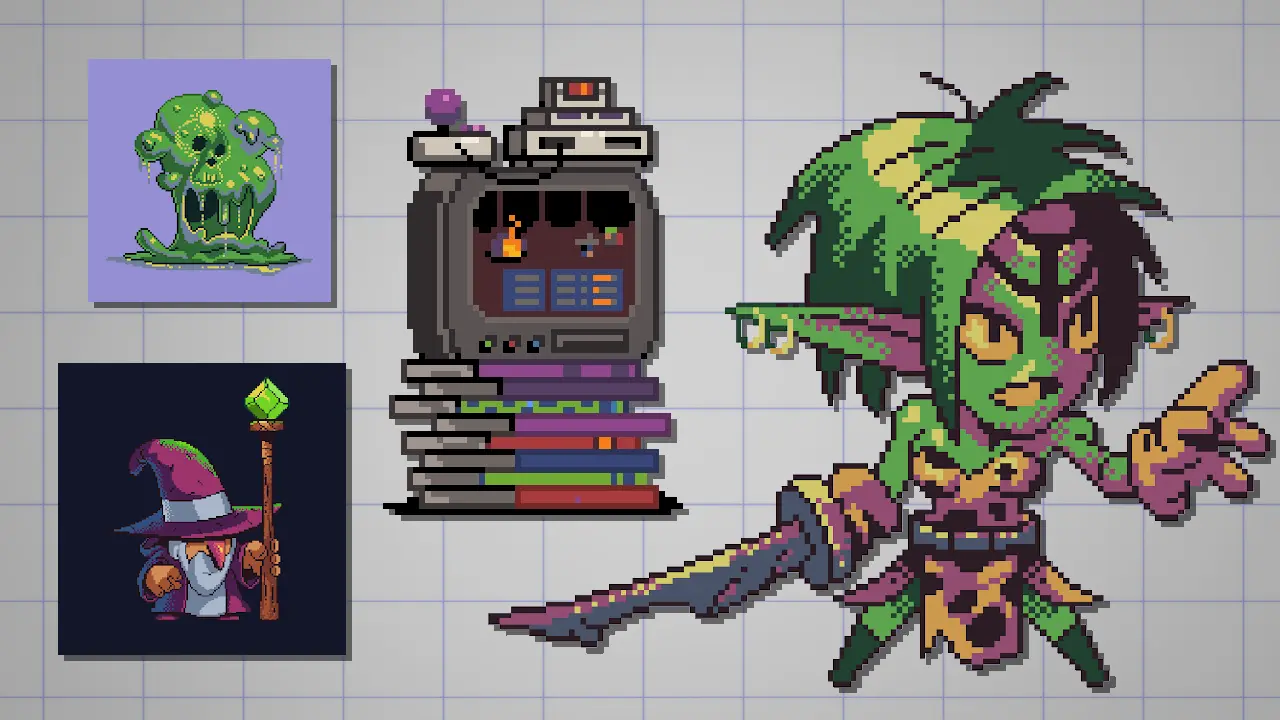
Creating cohesive and memorable characters
Here’s some tips for developing your character art style and creating unique and memorable characters.
Silhouettes that leave an impression
To make your characters instantly distinguishable, especially in a cast, focus on a clear and recognizable silhouette. You can vary the silhouettes between characters with elements such as the body proportions, height, hair style, clothing, and accessories. When creating a cast of characters, consider them as a group and check that the silhouettes are cohesive. You may choose to exaggerate the same body parts across all characters, or stylize different features in a similar way. You can use 3D models like in Clip Studio Paint to save customized body proportions and ensure consistency across drawings.
Think also about how the silhouette connects to each character’s backstory or personality. For example, a sporty character may have exaggerated proportions such as the length of their legs.
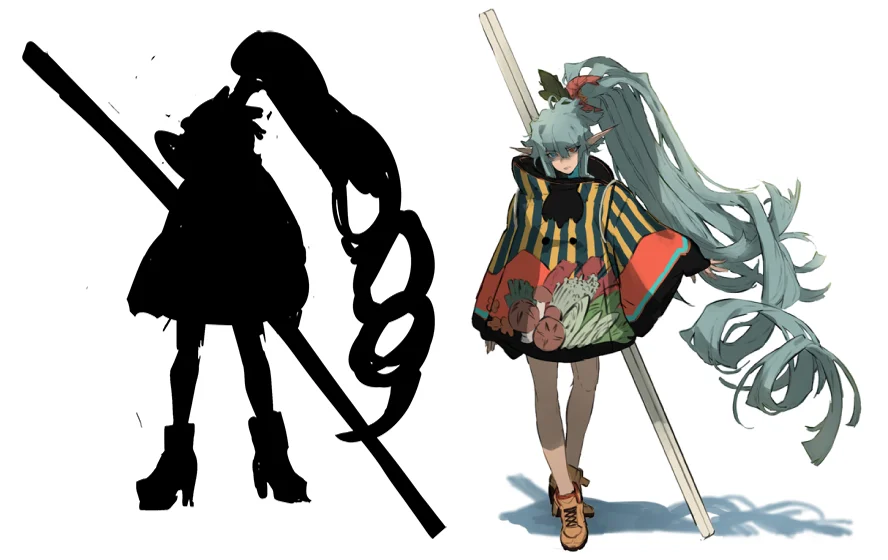
Color selection and emotion
The color scheme is an important factor to defining your style. As a starting point, you might also want to think about overall trends across your portfolio as a whole. Do you gravitate towards a specific color palette? While it’s good to base your style around your favorite colors or color combinations, other aspects such as the level of saturation, the amount of color variation, and types of color harmonies can also contribute to your style.

Creating a cohesive cast
For a cohesive cast of characters and a memorable style, try repeating certain style cues or motifs among your cast. For example, there may be common elements across their outfits. In the following example, even though each character is based on a different animal, the overall body proportions and the features from the representative animals are reflected in the same way to make them feel like part of the same universe.
If there’s a feature or aspect you enjoy drawing a lot, you can apply it to multiple characters to make it part of your artistic signature.
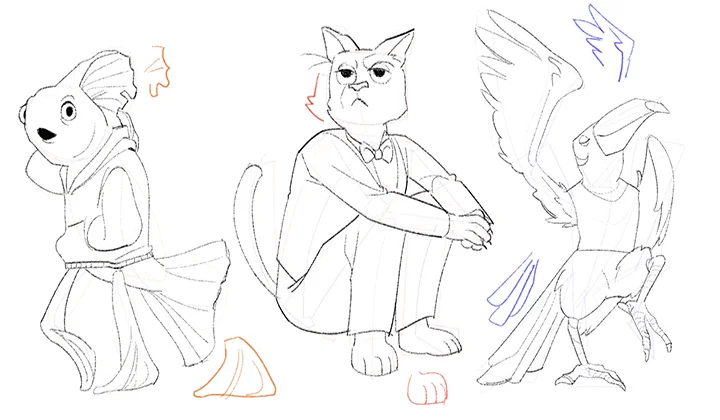
Get started creating character art
Start creating your own cast of characters using digital art tools like Clip Studio Paint, with handy features including customizable 3D models, pose assets, materials for adding textures and accessories, and more. Get up to 6 months free here.
What Artists Are Saying About Clip Studio
CLIP STUDIO PAINT PRO
for character art, concept art, illustration
CLIP STUDIO PAINT EX
for comics, manga, webtoons & animations
PRO
EX
Single-page illustrations & comics
Multi-page comics/manga & illustrations
Up to 24 frames for gifs or short animations
Unlimited frames for professional animation
Natural, customizable pen and brush tools
Vector layers
More than 10,000 free downloadable brushes and materials
3D models and drawing figures
PSD compatibility
RGB and CMYK compatible
For macOS and Windows
-
Export and print multi-page files
-
Convert images and 3D models into lines and dot shading
Free technical support
Free web services & community
Clip Studio Ask / Assets / Tips / Share

